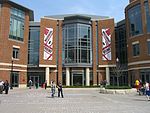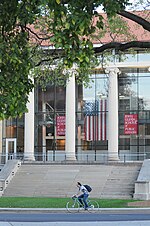Disappearance of Brian Shaffer
Brian Randall Shaffer (born February 25, 1979) is an American medical student at the Ohio State University College of Medicine. On the night of March 31, 2006, Shaffer went out with friends to celebrate the beginning of spring break; later he was separated from them and they assumed he had gone home. However, a security camera near the entrance to a Columbus bar recorded him briefly talking to two women just before 2 a.m., April 1, and then apparently re-entering the bar without any evidence of him leaving the area. Shaffer has not been seen or heard from since. The case received national media attention.Shaffer's disappearance has been especially puzzling to investigators since there was no other publicly accessible entrance or exit to the bar at that time. Columbus police have several theories about what happened; some interest and suspicion has been directed at a friend of Shaffer's who accompanied him that night, but has refused to take polygraph tests regarding the incident. While foul play has been suspected, including the possible involvement of the purported Smiley Face serial killer, it has also been speculated that he might be alive and living somewhere else under a new identity.
Excerpt from the Wikipedia article Disappearance of Brian Shaffer (License: CC BY-SA 3.0, Authors).Disappearance of Brian Shaffer
North High Street, Columbus
Geographical coordinates (GPS) Address Nearby Places Show on map
Geographical coordinates (GPS)
| Latitude | Longitude |
|---|---|
| N 39.99382 ° | E -83.00657 ° |
Address
North High Street 1534
43201 Columbus
Ohio, United States
Open on Google Maps










